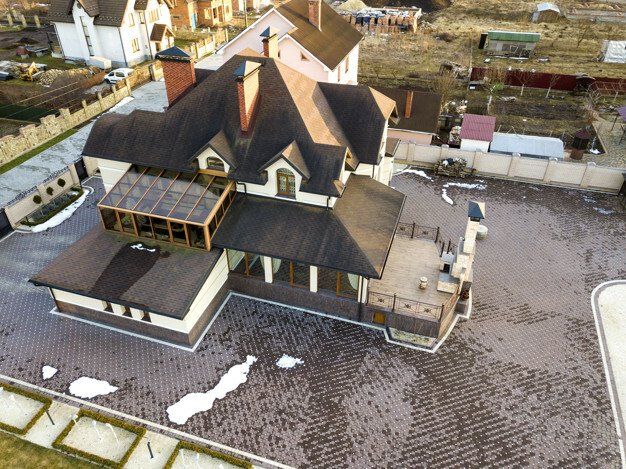Roof Waterproofing Palmdale, CA

What is Roof Waterproofing?
Roof Waterproofing Palmdale, CA also called roof leak prevention, is essentially the secondary layer of protection added to a roof that ensures that no water ever gets into your house or starts affecting the supporting beams or walls. There are several common causes for roof water leaks, all of which have a major impact on the degree of waterproofing that's present on your roof. The amount of water that seeps into your house can be as little as 0.1 inches in areas where there are no waterproofing barriers or practices in place to prevent water access. It can also spread quickly and heavily, even reaching hundreds of feet from the building, compromising your entire home.

Contact Us
We will get back to you as soon as possible.
Please try again later.
What are the Main Causes of Roof Leaks?
One of the main causes of roof leaks is poor roof waterproofing practices. Common roof waterproofing practices include not flashing over walkways, gutters, and eaves, as well as leaving the valleys between the walls and the ceiling dry so that water can flow underneath the roof. This is known as slope drainage. Unfortunately, this practice can lead to roofs that leak because water can seep under the roof and into the walls of a building when the slope is not taken care of properly. While slopes may not pose an immediate threat to your home and your family, it is imperative that you address the issue of slope drainage in order to prevent serious water damage.
Another major cause for roof leaks is materials used in the construction of your house and its roof. Many people mistakenly think that the use of waterproofing materials will fix any leak problems on their roof. That's simply not true. The materials used in the construction of your house are among the primary causes for water entry on your roof. Not only does the material used in the roof provide a watertight barrier against the elements, but it also provides an area through which moisture and water can penetrate the roof.
What are the Types of Roof Waterproofing Systems?
There are several types of roof waterproofing systems available to homeowners. There is a basic system consisting of a membrane or a rubber sheet attached to the roof. However, there are a number of different materials used to create these membranes. For example, there are tiles, a membrane glued to asphalt shingles, wood, ceramic fibers, and various synthetic materials. All of these different materials can have different properties and perform differently in the way they deflect and absorb water.
When choosing a
roof waterproofing system, a building owner must take many factors into consideration. He must know exactly what type of roof he has, how much water pressure the roof may experience, what type of materials are used in the construction of the building, and what sort of budget he has allotted for the project. When these and other factors are taken into account, a building owner will be better able to determine what type of waterproofing system he should use for his home.
What Factors do you need to Consider?
Roof Waterproofing Systems: A Key to Protecting Your Home from Inclement Weather
One important factor to consider is whether or not a roof waterproofing system will be sufficient enough to protect the occupants of the dwelling from the effects of inclement weather. For example, a hot, summer day can quickly bring down a roof that was properly built to protect from heat and UV rays. Likewise, a cold, winter day can quickly do damage to any roof that is not properly sealed against snow, rain, and other elements. A good rule of thumb to follow is that a homeowner should only install a roofing system if it can be expected to protect his or her home for at least three years. If the homeowner is unable to afford an expensive roofing system right now, he or she may want to reconsider getting one and wait until he or she has a little more money saved up.
Water Seepage and Its Impact on Slanted Roofs
On a related note, water seepage is also a major concern for people who own homes with slanted roofs. These houses generally experience leaks because water seepages cause cracks on the surface of the roof and on the interior wall cavities. These cracks, if left unnoticed can quickly turn into significant water seepages over time. In addition to causing significant water seepages, leakages from these cavities can also cause the interior part of the house to freeze during the winter.
The Importance of Roof Membranes in Weather Protection
As a final step to take in protecting your home from inclement weather, it helps to have a properly installed roof membrane installed before beginning any roof maintenance or repair projects. The membranes are applied to the surface of the roof and help to stop the rain, sleet, snow, and other forms of precipitation from getting through and damaging your roof. It also acts as a barrier against soil and mold, which can often cause damage to the roof by encouraging soil erosion. These are usually made out of synthetic rubber-like material, which makes them easy to apply. In addition to preventing surface damage, the membrane does its job by reducing the amount of heat that is absorbed by the roof structures as well as helping to keep the structure free of moisture.
Common Roof Waterproofing Myths Debunked
Many homeowners believe that all roof waterproofing materials are the same, but this is far from the truth. There are numerous types of roof waterproofing systems, such as membranes made of rubber, asphalt shingles, and even ceramic fibers, all of which perform differently. A common myth is that once a waterproofing system is installed, no further maintenance is needed. In reality, roof waterproofing requires regular upkeep to ensure long-term effectiveness, especially in areas where extreme weather or roof leaks are common. Failing to maintain a roof properly can lead to roof leakage, water damage, and the need for costly roof repair services. Regular inspections and repairs for cracks, water seepage, or compromised roof waterproofing membrane are essential to extend the life of the system and prevent future leaks.
Energy Efficiency Benefits of Roof Waterproofing
Effective roof waterproofing does more than just protect against leaks; it also enhances the energy efficiency of your home. A properly installed roof membrane creates an additional layer of insulation, helping regulate the internal temperature of your house. This means that during hot summer months, the membrane can reflect heat, reducing the need for excessive air conditioning, while in colder weather, it helps retain heat. By improving insulation, roof waterproofing not only cuts down on energy consumption but also leads to lower utility bills. This can result in significant cost savings over time. Homeowners often notice that their homes are more energy-efficient after installing or upgrading their roof waterproofing system, which helps maintain a stable indoor environment.
Signs Your Roof Waterproofing Needs Immediate Attention
It’s important to recognize the early signs that your roof waterproofing may be failing. One of the most common indicators is the presence of mold or mildew, often seen in attic spaces or ceilings. These can result from water seeping into your roof due to compromised waterproofing services. Another telltale sign is damp spots on your ceilings or walls, which suggest water penetration and the need for urgent leaking roof repair near me. Additionally, if you notice unexplained increases in your energy bills, it could be a sign that water has infiltrated your roof and damaged the insulation. If left unattended, these issues can lead to significant structural damage, making it essential to fix roof leaks before they escalate into major problems.
The Long-Term Cost Savings of Roof Waterproofing
Investing in roof waterproofing may seem like a large upfront cost, but it can save you considerable amounts of money in the long run. By preventing water damage, mold growth, and structural issues, a robust roof fix system helps avoid the need for frequent repairs and even roof replacements. Homeowners who invest in waterproofing now are safeguarding their property from future roof repair water damage costs. In addition, proper roof leakage repair ensures the longevity of your roof, protecting it from extreme weather conditions. This means fewer repairs and a longer lifespan for your roof, which ultimately translates to long-term financial savings.
By addressing these issues proactively and choosing high-quality waterproofing systems, homeowners can enjoy peace of mind knowing their roofs are protected from leaks, water damage, and potential structural problems. Investing in roof water proofing is not only a safeguard against environmental damage but also a smart financial decision.
If you're concerned about your roof's waterproofing, contact us today for expert advice.
For more tips on roof maintenance and waterproofing, be sure to check out
our blogs, where we provide detailed guidance on protecting your roof and home.
